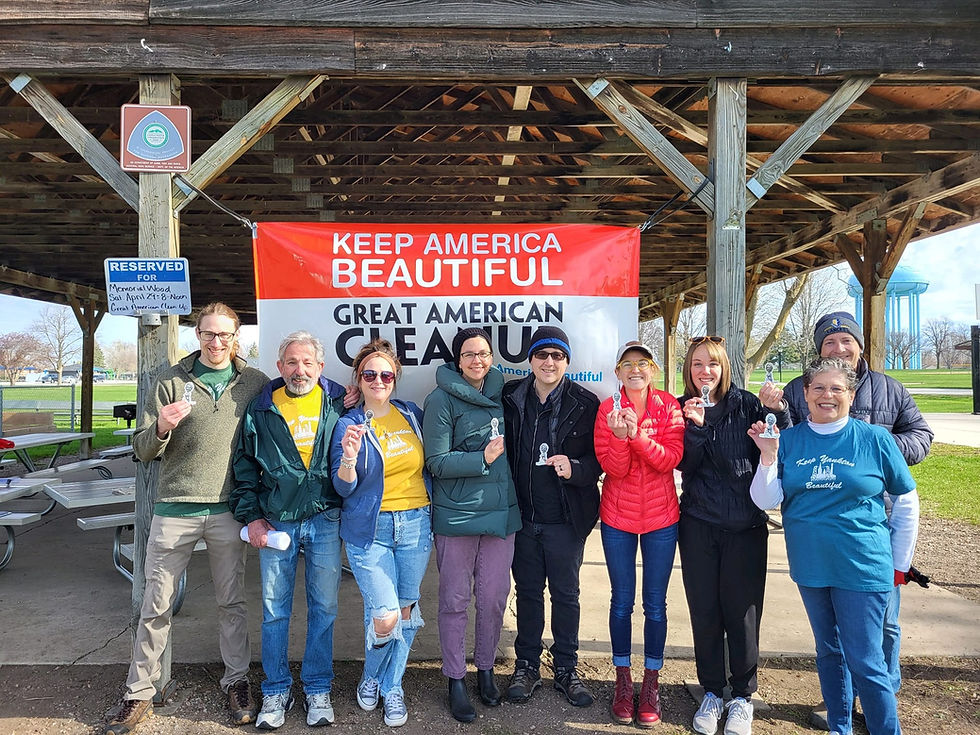Chop or Treat: What to do with your Ash Tree
- Keep Yankton Beautiful
- Nov 10, 2021
- 3 min read

Lisa Kortan, City of Yankton Urban Forestry & Horticulture Specialist and Keep Yankton Beautiful board member
You have an ash tree, now what? As a homeowner, there are a few steps you can start to think about before the emerald ash borer attacks our community.
First, check to be sure your tree is an ash tree. Here are its distinctive characteristics:
Opposite branching: each branch is paired with another directly across from it on the same limb.
Compound leaves: a leaf is made up of 5 to 11 small leaflets with a terminal leaflet pointing outwards from the tip of the leaf.
Distinctive bark pattern: diamond-shaped furrows or “X” patterns are most visible on mature trees.
Ash flower gall: some ash develops black or brown clustered balls from mutated flowers in spring that last into winter.
Do you protect and treat?
If your tree has significant landscape or personal value, you may wish to treat it with insecticide. Most treatments will have to be hired by a certified pesticide applicator who is registered with the South Dakota Department of Agriculture. Treatments are 98% effective if done properly. No treatments are to start till the emerald ash borer is within 15 miles of your tree. This is the farthest distance the adult beetle can fly though their actual flight distance is often less than 100 yards as they move to a nearby tree. Treatments could cost $150-$350 per tree, depending on the diameter of the trunk, and need to be repeated every 2 years. After the primary infestation is over and most ashes are dead the treatment could be repeated every 4 years, treating will be for the remainder of the tree's life.
Do you cut it down and replace it?
If you do not treat your ash tree, it will eventually die. You can remove it now or remove it later. Typically, the cost for removing a tree that is still alive is quite a bit cheaper than removing a tree that is dead. Once an ash tree dies from the emerald ash borer it becomes very brittle and can fall apart, becoming hazardous to people and property. Things to consider for the removal of your current ash tree are the size and value of the tree, if it’s in good health and location, and whether the tree is damaged already. When choosing a tree to replace your ash, pick one that is suitable for your growing conditions and that isn’t a common tree on your street. If we plant a variety of species, it will limit our community of future infestations by other insects and diseases.
When replacing your ash tree, here are some species to consider: Northern Catalpa, Kentucky Coffee tree, Ginkgo, Ohio buckeye, Black Walnut, Amur Cork Tree, Common Hackberry, Burr Oak, Swamp White Oak, and Ironwood.
The emerald ash borer is a threat to all ash trees and their cultivars. This means all green, black, white ash and their cultivars such as ‘Patmore’ and ‘Summit’ are attacked and killed. Treatments are the only means for protecting an ash tree from the emerald ash borer. Sioux Falls discovered the ash borer in 2018 and the infestation has now spread to Canton. The City of Yankton has been preparing for the arrival of the emerald ash borer by removing ash trees in the cemetery, golf course, city rights-of-way, parks, and trails. For more information on the City of Yankton’s Emerald Ash Borer response plan, you can visit the City of Yankton website.





Comments